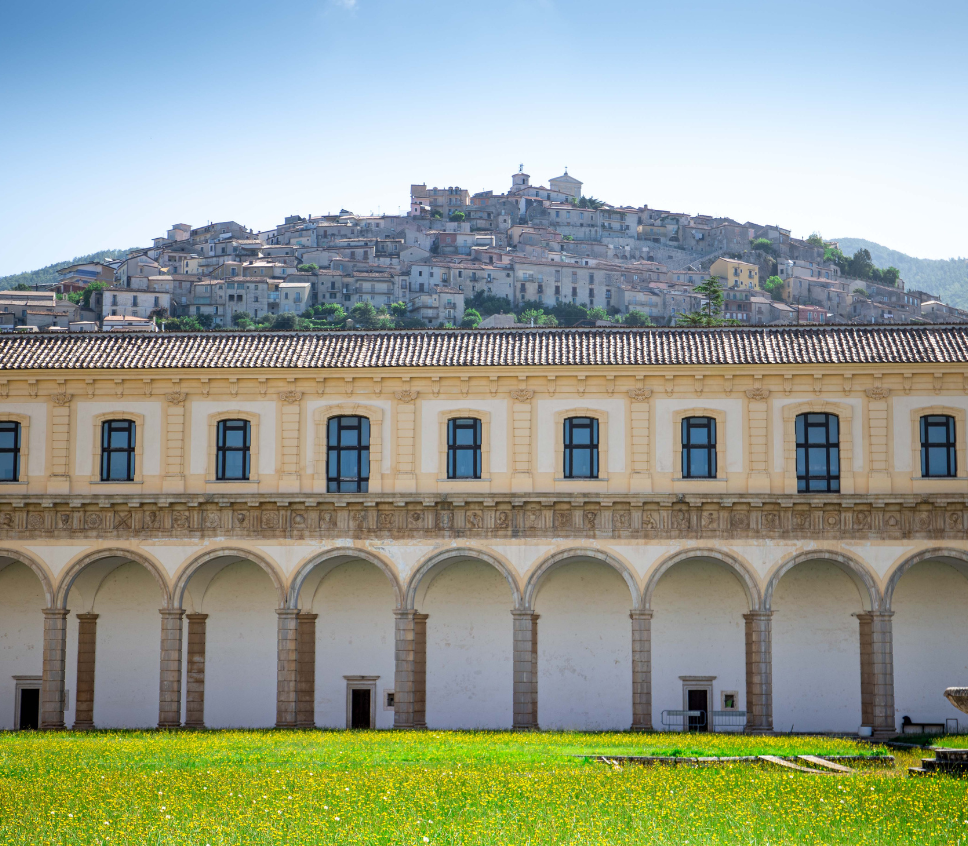CAR
Via A1/E45 and A2. Continue on SS19 driving in the direction of Viale Certosa. Padula-Buonabitacolo exit. Continue on SS 19 in the direction of Viale Certosa
Viale Certosa, 84034 Padula SA

Via A1/E45 and A2. Continue on SS19 driving in the direction of Viale Certosa. Padula-Buonabitacolo exit. Continue on SS 19 in the direction of Viale Certosa
From Salerno, it is possible to reach Certosa with the Curcio and Lamanna bus lines. On Sundays, there is also the Certosa Link departing from Salerno station
There is no train station in Padula, but you can get off at Battipaglia or Sapri and from there take one of the replacement buses provided by Trenitalia
The Carthusian monastery of St. Lawrence is the largest monastic complex in southern Italy as well as one of the most insteresting in Europe in terms of architectural magnificence and amount of artistic treasures.
The architectural style is mainly Baroque, in fact there are very few surviving 14th century traces. The complex has about 350 rooms and takes up a sufrace of 51.500 m², 15.000 m² of which occupied by the cloister alone, the largest in the world. The Charterhouse of St. Lawrence, due to its vast size, is second only to the Charterhouse of Grenoble in France. This Carthusian monastery, the first to be erected in Campania, was founded by Tommaso of San Severino in 1306 and dedicated to St. Lawrence. It includes three cloisters, a garden, a courtyard and a church.
It is possible to divide the architectural layout of the Carthusian of Padula in two areas: the first includes the work areas while the second is the monk’s residential area. The structure of the charterhouse, just like the other charterhouses, follows che Chartusian rule, that is “work and contemplation”. Because of this, in the structure there are different places for their fulfillment: the cloister, the library, where it is possible to admire the floor made of Vietri ceramic tiles, the Chapel decorated with precious marbles, the large kitchen, the large wine cellars, the laundries and the neighbouring fields where the fruits of the earth were cultivated for the sustenance of the monks.




